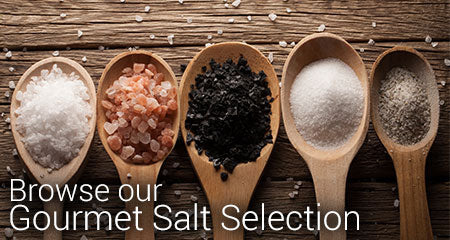Leptin-Resistance Keeps You Hungry & Craving More - #HP-EVOO - Blog # 96

Hello Everyone! Welcome back to another Friday blog. Today I want to take a look at what food keeps us hungry and drive us to continue to reach for snacks and munchies - even after a meal when we should be full and satisfied. This leads to overeating and high caloric consumption causing us to gain weight. Why does this happen and why are we not satiated?
Ever eat a meal and not feel satisfied - then go to the pantry and look - open the fridge and look - forage around looking for something else to munch on? We are driven to eat frequently, snack every couple of hours and eat late at night. What's doing this to us? The driver behind this is disruption of the leptin-melanocortin pathway. Our brain is not getting the signal that we are satisfied and don't need food. To make things worse, the SAD (Standard American Diet) is low in nutrients, yet high in calories, highly palatable and addictive, high in deuterium - full of salt, sugar and inflammatory oils - yet typically low in fiber, protein, vitamins and phytonutrients. These highly-processed, quickly absorbed foods spike our blood sugar. Our body responds with a huge insulin spike to try to correct the situation. When insulin remains elevated, things begin to go wrong - we become insulin-resistant and leptin-resistant. Leptin is the hormone that tells us we are full, satiated, and don’t require any further nutrients. When our cells become resistant to leptin we eat but are not fully satiated...we keep snacking. With Leptin unable to do its job, ghrelin - the hunger hormone - drives us to keep eating.
The hormones controlling our appetite are out of balance and not working correctly - driving obesity and other eating disorders. Obesity has sharply spiked since 1980 when prevalence was roughly 13.4%. “According to the 2022 State of Obesity report, Black adults have the highest rate of obesity in the U.S.—49.9%—compared to 45.6% of Hispanic adults, 41.4% of white adults and 16.1% of Asian adults. This doesn’t include children - “specifically, 12.7% of 2- to 5-year-olds, 20.7% of 6- to 11-year-olds and 22.2% of 12- to 19-year-olds in the U.S. have obesity, reports the CDC.” This is terrifying. This is the reason the drug companies have created Ozempic and other GLP-1 inhibitors are the new obesity drugs - and they are making a killing. These drugs are meant to be taken for the rest of your life! These drugs are being prescribed - not just for obesity, but for weight-loss - even to children...to be taken for the rest of their lives. These drugs come with some nasty side effects as well - gastroparesis (paralysis of the stomach and gastrointestinal tract) that can become permanent, thyroid tumors, ~50% of the weight lost is muscle - oh, and daily vomiting - just to name a few. There are lawsuits currently underway over the effects of these drugs. However, there is so much money to be made, they are pushing it to be approved as a weight-loss drug. Currently, the FDA has only approved it for use as a diabetic medication. When individuals stop the drug, they typically gain back the weight lost - however, what is gained back is 100% fat - and they end up with less muscle mass than they started with and greater obesity. Tragic.
“Obesity, leptin resistance and insulin resistance are interrelated. Studies have suggested that hyperinsulinemia can be a potential cause of leptin resistance and hence obesity, eventually leading to metabolic syndrome in such individuals.”
We tend to eat from the time we wake up until time to go to bed without giving our body a rest from digesting food. Often, we are stressed to boot, and cortisol is keeping our blood sugar elevated, which keeps insulin elevated.
What is behind this?
- Nutrient-poor foods: When we take a close look at the food we are consuming, it becomes clear. The more highly processed foods you consume, the more you tend to eat - by at least 500 calories/day compared to those that don't. Why? Because your body will keep encouraging you to eat until you've given it the nutrients it needs to be fully functional. We are chronically low in our vitamins, minerals and phytonutrients. Most highly processed foods are stripped of all nutrition, then they add synthetic vitamins. The vitamins, minerals and phytonutrients in whole foods are in perfect balance and nourish our bodies when we eat them. Our body doesn’t handle the highly-processed “enriched” food-like substances found in the SAD (Standard American Diet). The way to address this is to start consuming nutrient-dense foods - they are typically lower in calories as well.
- Frequent eating: We think we can’t go several hours between meals. Some people get “hangry” or end up hypoglycemic (low blood sugar). This is from a high glucose spike with concomitant insulin spike followed by a plummeting glucose. We end up on a rollercoaster blood sugar ride that is not fun. When we eat again so soon, we shut off our MMC or migrating motor complex that comes in roughly 90 min after a meal to clear out the stomach and small intestine. It appears to be regulated by a change in pH with gastric acid flow (acidic) from the stomach and release of duodenal bicarbonate (alkaline) from the small intestine. It comes in to sweep and clear remnants. It is interrupted by eating. So, if we keep eating or snacking every few hours it doesn’t have a chance to do its job. This can cause gastrointestinal problems over time.
- Low protein: If we don’t get enough protein, our body will drive us to consume more food to try to get its needs met. Part of the problem is most Americans are getting a significant amount of their protein from wheat, corn and soy. These products are loaded with glyphosate. This is not nutrient-dense and lack so many key amino acids such as lysine. The government subsidizes for these products making the food industry rich and leaving us sick. Wheat is high in amylopectin A that is very inflammatory, drives blood sugar higher than table sugar, full of gluten contributing to leaky gut and gastrointestinal problems. It triggers zonulin that causes the tight-junctions in our intestine to open allowing partially digested protein fragments as well as sewage to leak from the intestine into the body. This activates our immune system and can be the beginning of autoimmune diseases. Products made from wheat are growing. The wheat protein market is projected to hit $7.3 BILLION by 2032!!! What??? These will be highly-processed food-like substances they are pushing on us and our kids. Adults need roughly 1g protein per lb ideal body weight. Most women don’t get close to enough protein.
- Food addiction: We are addicted to certain foods. The food conglomerates do this on purpose! They hire taste experts and hook up their brains to find the taste point that lights up the addiction center of the brain. This is the same addiction center for drugs like cocaine and for sugar. You get a dopamine response that makes you feel good. However, it takes more and more for you to keep getting that same dopamine response. They target children - the longer you can keep someone addicted to your product the more money you make. These kids will beg and throw fits to get the foods they desire.
- Toxins: Glyphosate/other chemicals/plastics/heavy metals: These are known as obesogens and are hidden in our deodorant, perfume, makeup, shampoo, lotion, cleaning products, and more. They disrupt our hormones and our ability to detoxify. They damage our liver, kidneys and poison mitochondria - driving our energy into fat storage, depleting our usable ATP (energy) and shunting from oxidative phosphorylation to fermentation. This leaves us fat with low energy. It also sets us up for cancer - due to Warburg effect.
- Microbiome Dysbiosis: Whether you are missing beneficial species or have an overgrowth of yeast. Improving your microbiome has positive effects on leptin signaling.
So, what can we do to change this?
- Eat nutrient-dense foods - These are foods loaded with vitamins, minerals and phytonutrients that participate in multiple functions in the body - such as feeding our gut microbes and even working epigenetically to keep cancer genes turned off and health promoting genes turned on. They satisfy your body’s needs and allow leptin to work like it should. Most of us are nutrient-deficient so choosing these foods vs nutrient-poor high calorie is important.
- Hydrate - drink filtered WATER - roughly 1oz/lb ideal body weight. Add electrolytes or take a pinch of Celtic sea salt under the tongue. Many times we think we are hungry when we really are thirsty. Most of us are in a state of mild dehydration - which triggers the conversion of glucose to fructose in the body. Higher levels of fructose cause damage to the mitochondria, liver (NAFLD), kidneys, blood vessels and increase uric acid levels. Uric acid then damages the lining of the blood vessels inhibiting the enzyme (eNOS) responsible for the production of NO (nitric oxide). NO dilates blood vessels enhancing the blood’s ability to deliver O2 (oxygen). Further, low blood volume is detected by the kidneys causing activation of the renin-angiotensin system that drives up blood pressure.
- Eat adequate protein - “studies in animals and humans show that diets high in fat, carbohydrates, fructose, and sucrose, and low in protein are drivers of leptin resistance.” Clean protein is very satiating and nutrient-dense. Aim for 30-50g protein per meal - roughly 1g/lb ideal body weight for adults. Protein is very satiating. Let’s say for dessert you were given a 4oz steak vs 4oz chocolate mousse. A few bites in on that steak and you won’t be able to finish - but you could easily eat all the mousse!
- Avoid sugar and grains - they spike blood sugar - then drop you low making you feel like you need to eat again soon to feel better. Many grains spike blood sugar higher than sugar!!
- Increase Fiber: Fiber slows the absorption of glucose, allowing your microbes to consume the sugars and preventing the sharp spike in blood glucose. Eat 5-9 C veggies (half raw, half cooked)/day to get adequate fiber along with a myriad of phytonutrients.
- IF (intermittent fasting) - allowing plenty of time between meals to give our MMC a chance to do its job as well as triggering autophagy. Give yourself 17-18 hours overnight fasting to help you regain your leptin sensitivity.
- Eat healthy fats - Fat is highly satiating and can inhibit the hunger hormone. You can use this tool when fasting. If you haven’t made it the length of time you’re trying to hit, take a shot of HP-EVOO - it will nip that hunger in the bud and allow you to complete your fast. HP-EVOO, avocado, coconut, MCT oil, Grass-fed butter and Ghee, nuts, seeds. These are highly satiating and full of vitamins and polyphenols, particularly HP-EVOO. These fats provide fuel in the form of SCFA (short-chain fatty acids) that feed the microbiome, enterocytes (intestinal cells) and mitochondria.
- HP-EVOO (high polyphenol extra virgin olive oil) - Therapeutic effects of taking a healthy shot of EVOO (2-4T) provides a myriad of polyphenols that put out fires all over the body - including the brain. HP-EVOO provides vitamin E at 80 x the amount in coconut oil and some vitamin K as well. It also tells the brain that you don’t need any glucose in the blood - it’s time to use the stored energy - your fat. HP-EVOO improves insulin-sensitivity and dampens appetite, helping to restore leptin-sensitivity. Oleic Acid in EVOO helps to stabilize cell membranes while the polyphenols work as powerful antioxidants. Some polyphenols are hydrolyzed (more water-soluble) in the gastrointestinal tract - providing large amounts of free HT (hydroxytyrosol) and tyrosol that accompany another polyphenol, Oleuropein. It is not affected by the gastric environment and remains unchanged as it enters the large intestine - where it exerts a prebiotic-effect to promote a healthy and balanced microbiome. It is “used as a carbon source by probiotics such as Bifidobacterium and Lactobacillus during the proliferation phase. Prebiotics are mainly fermented through glycolysis, and then change the intestinal flora components, which is beneficial to the growth of probiotics…” “All phenolic molecules that are not absorbed by the small intestine enter the colon and are degraded by intestinal microorganisms into a wide range of metabolites that are eventually absorbed or excreted. In addition, unmodified metabolites reach the large intestine and exert prebiotic-like effects to promote intestinal homeostasis, influence microbiota composition and inhibit the growth of harmful bacteria.”
So, until next time my friends…Drink, Drizzle, Digest HP-EVOO at least 4T raw daily, - use more for cooking and drizzling onto your food - eat the rainbow of organic or wild-sourced or organic veggies (7-9 C) and low-glycemic fruits (to get the rainbow of gut microbes!) - eat wild-caught, pasture-raised, grass-fed - get plenty of sunshine - supplement magnesium, zinc, vitamin D3 + K2 - get your trace minerals and electrolytes with good sea salt - Celtic is hand-harvested and Himalayan was formed before plastics - eat foods high in lutein - drink your body weight in oz of water - get a good pre/probiotic - consume digestible and indigestible fiber for your gut microbes - adaptogens (such as mushrooms) and methylation donors (kale, beets, spinach, cruciferous, lion’s mane…), marjoram, rosemary, oregano, parsley and other herbs to detox, enhance overall health and reverse aging and disease - exercise your body and mind - add a few minutes of mindful meditation to your day to combat stress - take a hot Epsom salt bath and follow with a cold shower/ice plunge - practice “earthing” as an anti-inflammatory - remove EMF (electromagnetic frequency) devices and blue light - use IR (infrared) from incandescent lighting, non-toxic candle or light a fire to enhance sleep and...turn off the light!! #HP-EVOO
This blog is intended for informational purposes only. Discuss strategies with your Healthcare Practitioner.






